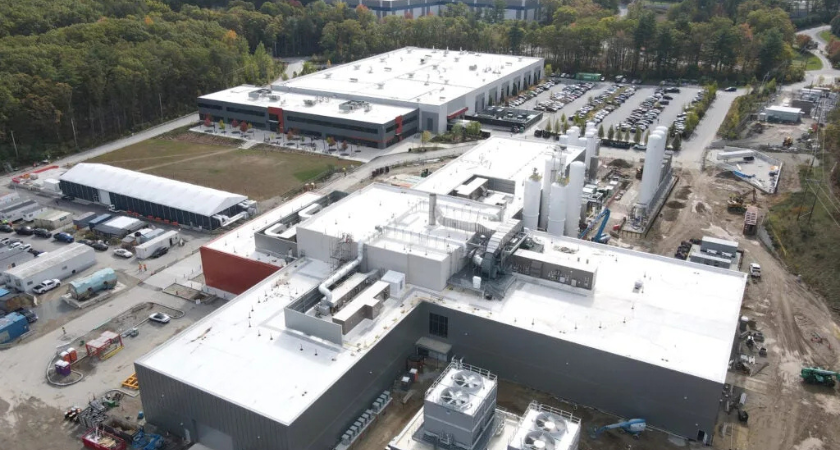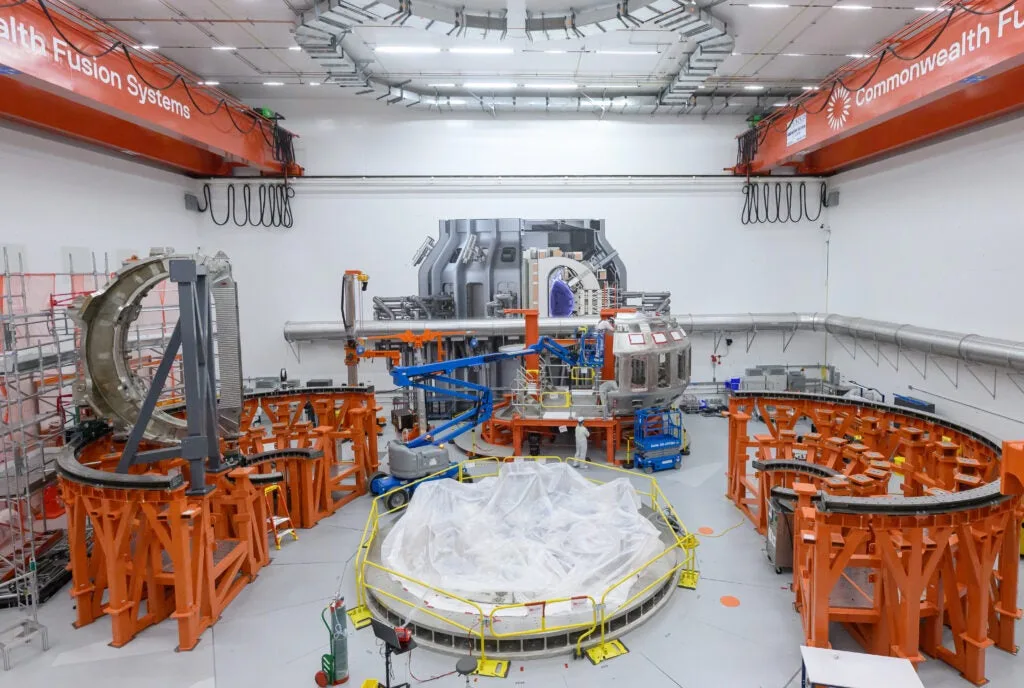
DEVENS, Mass.,- Commonwealth Fusion Systems (CFS) has taken a major step forward in its mission to deliver commercial fusion energy, with the arrival of the first half of the SPARC tokamak vacuum vessel at the company’s rapidly expanding campus outside Boston.

The massive 48-ton component, described by the company as a “half-donut-shaped steel construction,” will form the sealed chamber that houses SPARC’s superheated plasma — the fuel for fusion. CFS said the vacuum vessel marks one of the most significant physical milestones yet for the pioneering fusion facility.
In a statement, the company noted: the “48-ton half-donut-shaped steel construction is instrumental to SPARC’s mission to demonstrate the core technology for our ARC fusion power plant,” adding, “We already have installed SPARC’s cryostat base in place, the foundation fusion machine called a tokamak, but the vacuum vessel gives a much better idea of SPARC’s final form and how it’ll carry us toward large-scale commercial fusion energy.”
With the component now staged in Tokamak Hall, the SPARC team is moving into a more visible build-out phase. Technicians will next install diagnostic systems and panels of heat-resistant tungsten that will help the chamber withstand plasma temperatures hotter than the center of the sun — more than 100 million degrees Celsius.
Brandon Sorbom, CFS co-founder and chief science officer, emphasized the momentum: “This is a really exciting time because we’re starting to really see the pieces come together for SPARC.”
The tokamak vacuum vessel is designed to maintain an ultra-clean, airless space where fusion can occur. That requires advanced materials, precision manufacturing, and extreme durability to manage both thermal and magnetic stress.
Officials explained that the vacuum vessel’s role is not to control the plasma itself — that task belongs to the CFS high-temperature superconducting (HTS) magnets mounted around the chamber — but rather to “create an airless environment, like a pocket of outer space, in which the plasma can exist.” They added: “even a wisp of air in the vacuum vessel will snuff out the fusion reaction. The vacuum vessel is a super-tough component. It needs to withstand heavy heat loads from being near plasma that’ll exceed 100 million degrees Celsius. And it’ll need to shoulder the strong physical forces that SPARC’s magnets will exert.”
.jpg)
Transporting and positioning the vessel required “years of close coordination among several CFS teams—from diagnostics and design to thermal and structural engineering. But it also involved work to develop a supply chain that reaches outside CFS.”
The milestone demonstrates more than construction progress — it reflects growing commercial readiness around fusion technologies.
“The vacuum vessel is really significant because it’s a big piece of work that's been done in concert with one of our suppliers,” Sorbom said.
CFS has vertically integrated much of its fusion system manufacturing, including production of its breakthrough HTS magnets at an on-site magnet factory — a capability unmatched elsewhere in the world.
However, as CFS explained, “Building a supply chain lets CFS complement that in-house capability by drawing on partners that already have the talent and know-how we need for other projects. Our vacuum vessel uses state-of-the-art technology, but manufacturing partners don’t need expertise in fusion science to build it to our specifications. That means our work in fusion energy can bring in new business to companies looking to expand—for example, the oil and gas industry’s suppliers that are already experts in fabricating sophisticated metal machinery. Today’s work on SPARC could lead to tomorrow’s work on many ARC power plants.”
Sorbom added: “It's a big moment for us because we have a big piece of hardware showing up, but it's also just a really big moment for the industry. It's a sign of how the supply chain is really maturing.”
With assembly accelerating, CFS remains on track toward SPARC demonstrating net-energy fusion — a key step before the company’s first commercial ARC power plant expected later in the decade.
Originally reported by Darrell Proctor in Yahoo News.